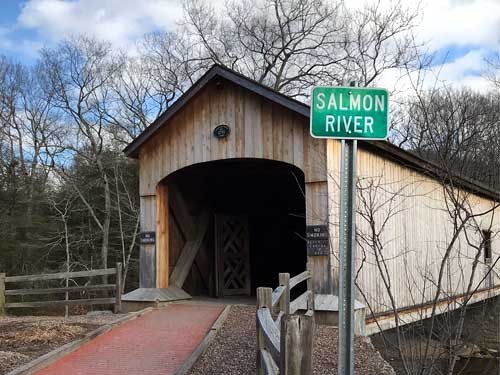Comstock Bridge
Introduction
Text-to-speech Audio
Comstock Bridge is historically significant for two reasons: it is one of only three covered bridges remaining in Connecticut and its incorporation of iron rods (in the truss) represents an important innovation in bridge building. Just 30 feet long, it is also an attractive structure and is a main focal point of the surrounding Salmon River State Forest where visitors can hike, fish, and picnic. Remarkably, the bridge still has 50% of its original wood and has been well maintained ever since it was originally built in 1785. It remained uncovered until 1873 when it was reconfigured with its Howe truss (named after its inventor William Howe of Massachusetts). The bridge was added to the National Register of Historic Places in 1976.
Images


Sources
Clouette, Bruce. "Comstock Bridge." National Parks Service - National Register of Historic Places Nomination Form. January 1, 1976. https://npgallery.nps.gov/NRHP/GetAsset/NRHP/76001978_text.
"Comstock Bridge." Chatham Historical Society. Accessed March 10, 2019. https://chathamhistoricalct.org/comstock.
Photos: Chatham Historical Society
"Comstock Bridge." Chatham Historical Society. Accessed March 10, 2019. https://chathamhistoricalct.org/comstock.
Photos: Chatham Historical Society
